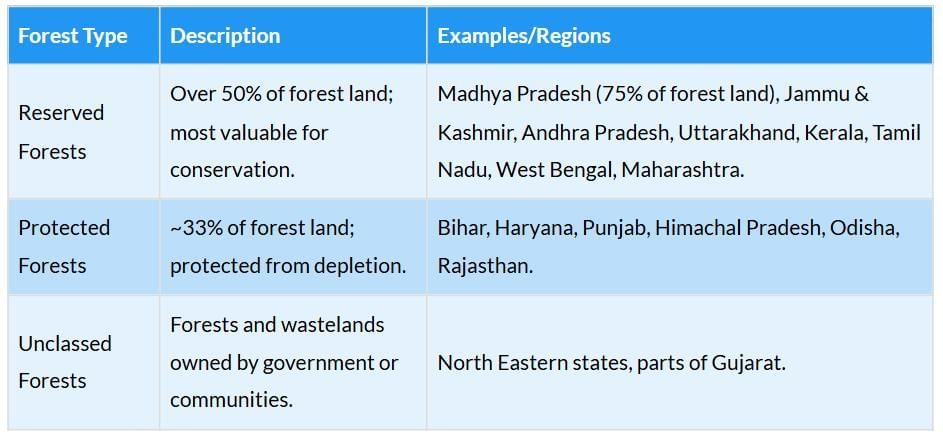Cheatsheet: Forest and Wildlife Resources | Social Studies (SST) Class 10 PDF Download
Introduction to Biodiversity
Earth hosts a wide range of life forms, from microorganisms to large animals like elephants and whales, creating a complex ecological system. Humans depend on this ecosystem for air, water, and food.
- Key Role of Forests: Act as primary producers, sustaining all life forms.
- Biodiversity Importance: Ensures ecosystem balance and human survival.
Flora and Fauna in India
India is one of the world’s most biodiverse countries, hosting ~8% of global species (1.6 million).
Conservation of Forest and Wildlife in India
Conservation protects ecological diversity and life support systems (water, air, soil).
- Indian Wildlife (Protection) Act, 1972: Bans hunting, protects habitats, restricts wildlife trade.
- Protected Species: Tiger, one-horned rhinoceros, Kashmir stag, crocodiles, Asiatic lion, Indian elephant, black buck, great Indian bustard, snow leopard, butterflies, moths, beetles, dragonfly, and plants (since 1991).
- Project Tiger (1973): Aims to protect endangered tigers.
Project Tiger
Launched in 1973 to save tigers, whose population dropped from 55,000 to 1,827 by 1973.
Importance: Preserves tigers and significant biotypes.
Types and Distribution of Forest and Wildlife Resources
Forests in India are managed by the government (e.g., Forest Department).
Community and Conservation
Local communities play a key role in conservation efforts.
Examples:- Sariska Tiger Reserve, Rajasthan: Villagers oppose mining using Wildlife Protection Act.
- Bhairodev Dakav 'Sonchuri': 1,200 hectares protected by five villages in Alwar, Rajasthan, with rules against hunting.
- Chipko Movement: Stopped tree cutting in the Himalayas; promoted local species planting.
- Beej Bachao Andolan & Navdanya: Promote chemical-free, diverse crop cultivation.
- Joint Forest Management (JFM): Started in 1988 in Odisha; communities protect degraded forests and receive non-wood products and a share of timber.
Sacred Groves
Pristine forests preserved due to tribal beliefs in nature worship.
Features: Untouched forests; interference prohibited.
Examples of Sacred Species:- Mundas and Santhal tribes: Mahua and kadamba trees.
- Odisha and Bihar tribals: Tamarind and mango trees during weddings.
- General: Peepal and banyan trees.
- Bishnoi villages, Rajasthan: Blackbuck, nilgai, peacocks protected as community members.
- Other Sacred Elements: Springs, mountain peaks, plants, animals, macaques, and langurs around temples.
|
66 videos|614 docs|79 tests
|
FAQs on Cheatsheet: Forest and Wildlife Resources - Social Studies (SST) Class 10
| 1. What are the main components of forest and wildlife resources? |  |
| 2. Why are forests important for the environment? |  |
| 3. How do human activities affect wildlife resources? |  |
| 4. What steps can be taken to conserve forest and wildlife resources? |  |
| 5. What role does legislation play in the protection of forests and wildlife? |  |






















